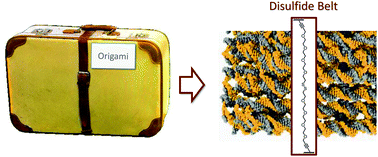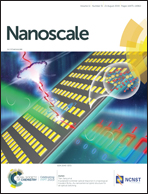Stabilizing DNA nanostructures through reversible disulfide crosslinking†
Abstract
Designed DNA nanostructures can be generated in a wide range of sizes and shapes and have the potential to become exciting tools in material sciences, catalysis and medicine. However, DNA nanostructures are thermally labile assemblies of delicate biomacromolecules, and the lability hampers the use in many applications. Disulfide crosslinking is nature's successful approach to stabilize folded proteins against denaturation. It is therefore interesting to ask whether similar approaches can be used to stabilize DNA nanostructures. Here we report the synthesis of two 2′-deoxynucleoside phosphoramidites and two nucleosides linked to controlled pore glass that can be used to prepare oligodeoxynucleotides with protected thiol groups via automated DNA synthesis. Strands with one, two, three or four thiol-bearing nucleotides were prepared. One nicked duplex and three different nanostructures were assembled, the protected thiols were liberated under non-denaturing conditions, and disulfide crosslinking was induced with oxygen. Up to 19 crosslinks were thus placed in folded DNA structures up to 1456 nucleotides in size. The crosslinked structures had increased thermal stability, with UV-melting points 9–50 °C above that of the control structure. Disulfides were converted back to free thiols under reducing conditions. The redox-dependent increase in stability makes crosslinked DNA nanostructures attractive for the construction of responsive materials and biomedical applications.



 Please wait while we load your content...
Please wait while we load your content...